Prospective Parents
Are Montessori preschools expensive?
In the absence of meaningful preschool regulations in India, opening a preschool has been relatively easier. Also, lack of central affiliation bodies (such as CBSE or ICSE) has meant that there are no mandated teacher qualifications or infrastructure requirements for preschools in most states. This has led to mushrooming of preschools in all forms and shapes.
While some preschools run out of a single-room setup and handful of students, some run out of large campuses with hundreds of students. And while some have highly trained and experienced faculty, some have completely untrained and inexperienced faculty.
Consequently, the same wide range is reflected in the fee structures of preschools.
Rationale for preschool fee structure
A service can be termed over-priced, fairly-priced or under-priced by comparing the returns/value it generates for the consumer vs. its price. This extends to preschools, schools, colleges and professional courses as well.
For professional courses (such as MBA, CA, Engineering, MBBS etc.) there are clear and immediately measurable monetary returns in terms of the pay packages a student can command after completing the course. However, for preschools and schools there are no such immediately measurable monetary returns. These are long gestation services where the real benefits are back-end loaded.
Therefore, while fee structures of professional courses are generally linked to the monetary returns they yield (pay-packages), preschools have to adopt a “cost-plus” approach.
Accordingly, preschools work to cover the cost of running the operations, plus generate adequate returns for the management’s time and efforts.
The Montessori cost elements
While traditional preschools can exercise a large degree of freedom in selecting their cost elements, Montessori preschools have limited discretion in this. This is so because Montessori pedagogy necessitates some elements to ensure learning. These include:
1. The Environment
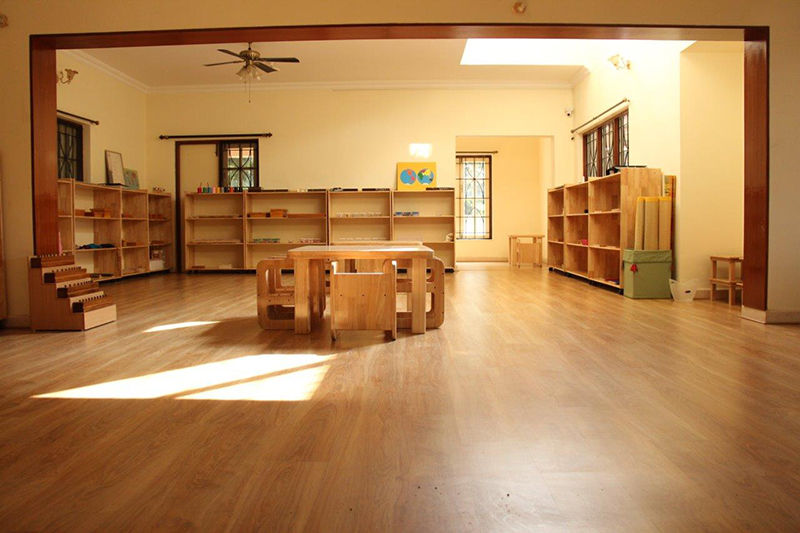
A Montessori environment should be spacious, clean, inviting, free from distractions and should have natural elements integral to it. Therefore, Montessori schools are housed in large campuses that result in higher rental/lease costs vs. traditional schools that don’t have such requirements.
Benefits for the child: An inviting and distraction-free environment calms the mind and sets the mood for learning. It helps a child better concentrate and grasp concepts faster and for longer.
Parents should look for: Calmness, natural sunlight, airiness and comfort for a child; safety of the furniture; minimal distractions like posters, notices, cut outs, crafts activity pasted on the walls or hanging from the ceiling.
2. The Montessori Materials
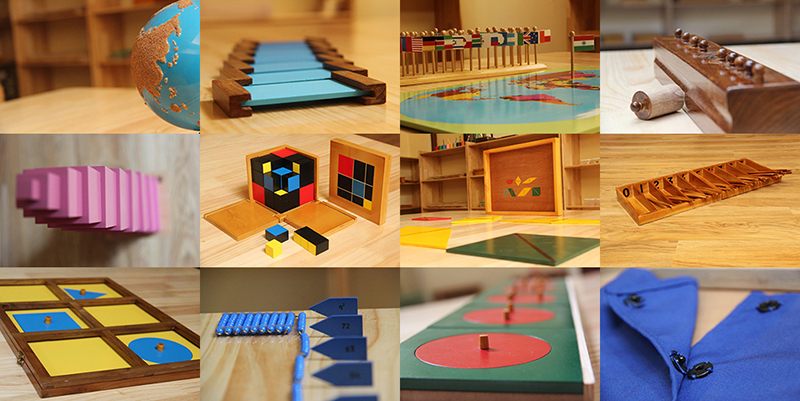
Each Montessori material was designed after careful scientific research and has a specific direct and an indirect learning aim. Given all Montessori “learning” is by “doing/working” with the material, the materials play a vital role in the learning. The dimensions, colors, shapes, sizes, gradations of all materials are also very important for the learning.
Therefore, Montessori materials are high-quality, high-precision products that take hours of manual effort to produce. Besides, one Montessori set comprises of hundreds of such materials. This leads to higher total cost of materials as compared to traditional preschool materials.
Benefits for the child: Each material is specially designed taking into consideration child ergonomics and learning objectives. As a result, children are very comfortable with Montessori materials and look forward to working with them. This results in a faster and more deep-rooted conceptual leaning.
Parents should look for: A complete set of materials in the environment; proper categorization and order of material; materials being placed within easy reach of children.
3. The Teachers (directresses)
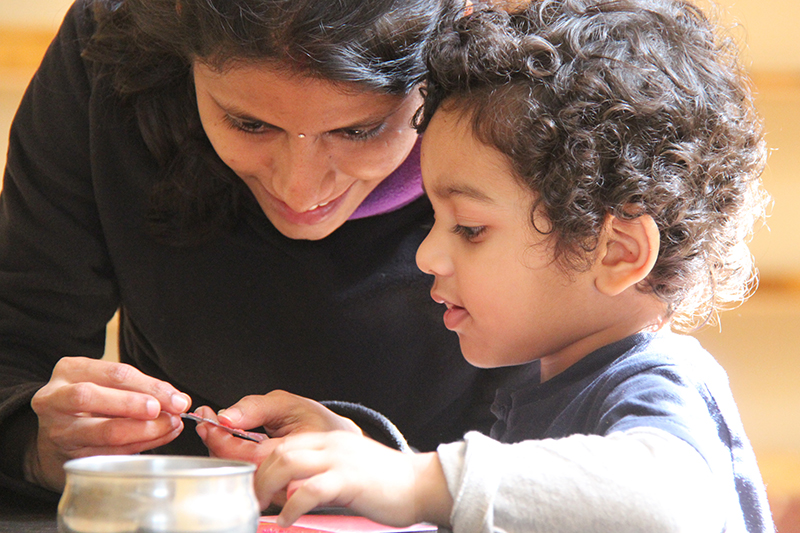
Montessori teachers (known as “Directress” in Montessori parlance) are highly knowledgeable individuals who go through rigorous training. The training includes detailed study of child psychology and child growth/development patterns. The training also includes practical observation and teaching assignments. A school that employs well-trained, qualified and motivated teachers show better results in terms of long term growth and development in students vs. those who do not. And well-trained and qualified human resources in any industry need to be compensated well for their expertise.
Benefits for the child: Easier settling into the environment; better understanding of concepts; development of love for learning; prevention of any learning related phobias (such as maths-phobia); meaningful and better teacher-parent communication; effective behavioral intervention (should the need arise); better social and cognitive development.
Parents should look for: Details about qualifications and experience of the teaching faculty; teachers’ motivation for choosing the teaching career.
4. The Individualized curriculum (mixed-age group)
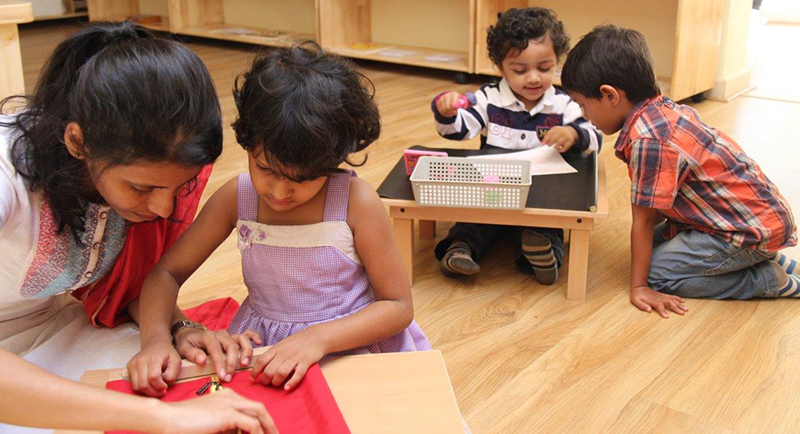
Montessori is a “child-led” learning philosophy which advocates a mixed-age group environment (classroom). This implies that a single lesson-plan cannot be implemented for the entire class. The curriculum for each child is separately designed and the progress is constantly monitored.
Even review meetings with parents are highly child-specific and therefore more meaningful. The duration of review meetings are also usually longer than traditional preschools. This takes up significant teaching and infrastructure resources.
Benefits for the child: Individualized curriculum provides for self-paced learning allowing adequate time for learning concepts; it also reduces the chances of unfair peer pressure by comparison; a mixed-age group leads to better social skills and higher confidence levels in social setups; more meaningful review meetings lead to better school-parent coordination.
Parents should look for: A mixed-age group environment; individualized curriculum; frequency and duration of review meetings.
5. Cleanliness and hygiene
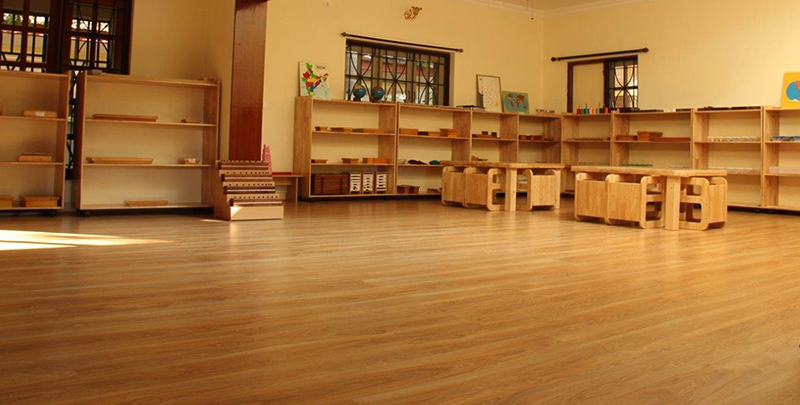
This is one of the key requirements for all educational institutions. However, for Montessori preschools, this is one of the non-compromisable requirements for learning. A Montessori environment is supposed to be clutter free and welcoming. It should also be organized and structured. This is also in-line with the psychological growth-need of “sense of order” in children. Maintaining such an environment demands constant monitoring and dedicated resources.
Benefits for the child: A welcoming and clean environment sets-up the mood for the whole day; better hygiene and cleanliness lead to fewer instances of diseases and therefore lower absenteeism; it sensitizes and instils a culture of cleanliness and order in children.
Parents should look for: General state of cleanliness; frequency of disinfecting the environment; general hygiene level of washrooms, classrooms, play area and sanitization of materials.
6. Transparency
Although many people consider Montessori as a “mute method” that silently works on the child, it is one of the most transparent methodologies. Details of Montessori curriculum and materials is widely available and its efficacy is thoroughly researched and validated. Moreover, classroom observation sessions for parents are frequently organized in Montessori preschools that give the parents a real-time experience of how the preschool works.
For obvious reasons, any classroom environment that is transparent and viewable, needs to be maintained in a high quality condition at all times. This in turn needs adequate resources and properly trained workforce.
Benefits for the child: Better overall environment; parent understanding of the Montessori philosophy and how it works; more consistent environment at home leading to faster learning.
Parents should look for: Provision to view a live class before admission; availability of parent observation sessions; CCTV viewing access to the environment.
7. Accessibility
Generally, management at Montessori schools are highly accessible to parents. This eventually means working and responding to parents even post schools-hours. Most Montessori teachers also continue to suggest activities to parents that the children can perform when at home or even when travelling.
Benefits for the child: Regular update of the child’s requirements; consistency of environment and better parent involvement/cooperation.
Parents should look for: Approachability of management; ease of scheduling urgent appointments; access to teachers; access to direct contact numbers of management; responsiveness of management.
There is a general perception that Montessori education is an elite education or only for the creamy layer. However, deeper inspection shows that pure Montessori preschools are only moderately-higher priced than traditional preschools and mainly due to unavoidable cost elements.
Moreover, most pure-Montessori preschools are products of passion and the founder(s) are actively involved in the day-to-day functioning of the school. In many cases, apart from managing the preschool, the founder(s) teach as well, which gives them a grip of daily functioning of the preschool.
The core motivation of such preschools is a burning desire to make a difference to children’s lives. The financial or monetary aspects take a secondary place. This is in contrast with many franchisee/traditional schools, where the financial return is the first and very reason of their inception.
With such a vast difference in primary objectives, non-Montessori preschools may get tempted to cut corners that could hinder growth and development of students. On the other hand, Montessori preschools generally attempt to provide the best possible environment for each child to develop well.
But is it all worth it?
History shows that great achievers in society have emerged from all backgrounds and walks of life and no educational institute can claim monopoly to success. Besides, there is no substitute for parental involvement and family environment, which plays a critical role in a child’s development, achievements and happiness.
However, with a Montessori early education, parents can provide a nurturing environment that focuses on the all-round development of children. This leads to better self-discovery, which could provide an early sense of purpose in life. This eventually translates into sustainable happiness and inner peace and greatly increases the chances of success in the chosen vocation.
Understandably, the real impact of a Montessori pre-schooling can never be calculated while the child is still in the preschool. And therefore, the logic of spending resources for a Montessori education can always be questioned without a definite answer.
However, the parents of Larry Page/Sergey Brin (Google founders), Jeff Bezos (Amazon.com founder) or Jimmy Wales (Wikipedia founder) among many others might have an answer to that question – all of whom chose a Montessori education for their children.
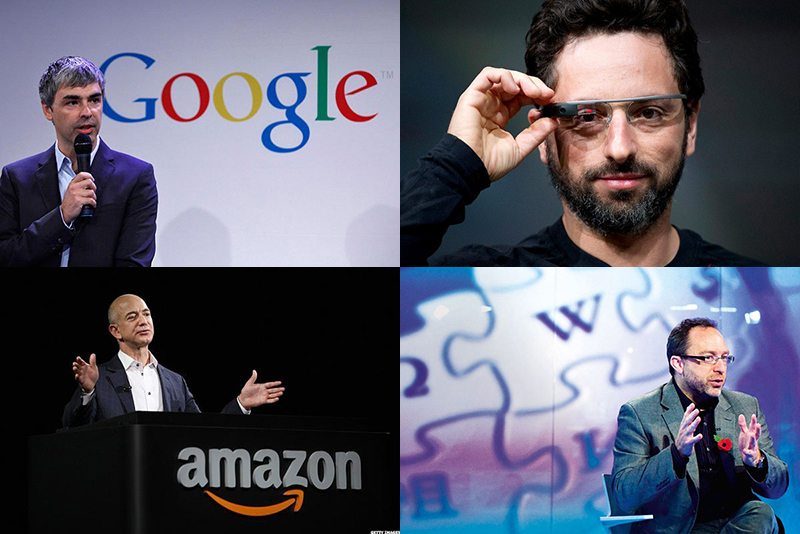
Given preschools cover a wide spectrum of institutions with equally wide fee structures, parents might lack the knowledge of the components of the cost structure and whether a Montessori preschool education is really worthwhile. This article aims to provide that knowledge to parents which will enable them to make a more informed decision regarding Montessori preschools.
